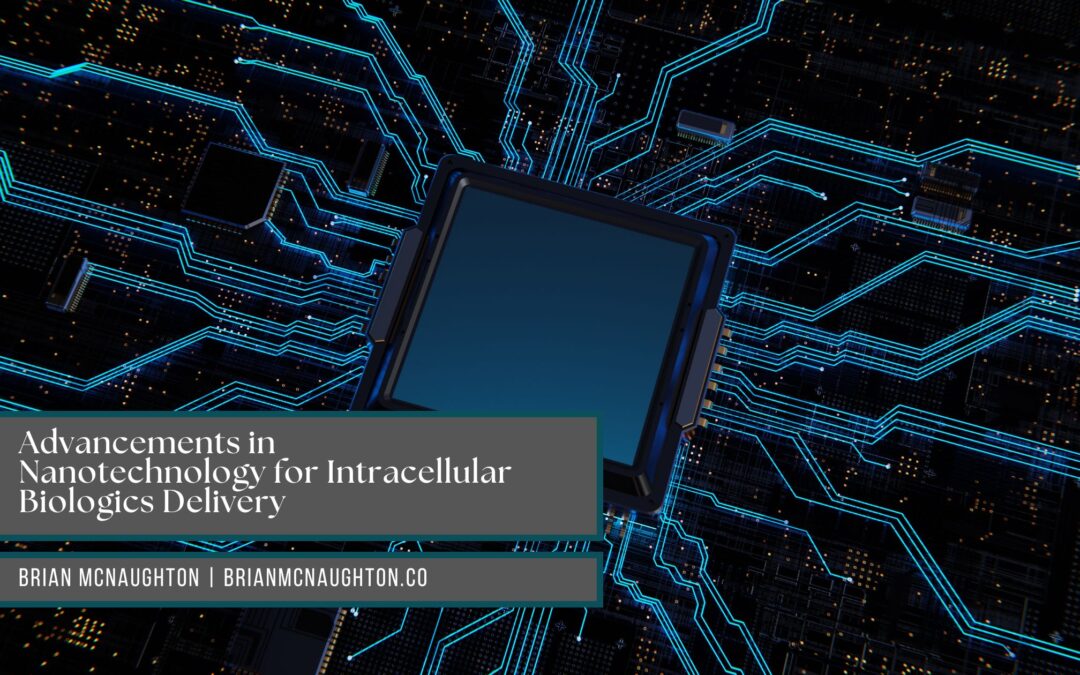Nanotechnology, the science of manipulating matter at the nanoscale, has revolutionised various fields, including medicine. One area where nanotechnology is making significant strides is in delivering biological drugs into cells. Biologic drugs, such as proteins and nucleic acids, hold immense potential for treating various diseases. Still, challenges in delivering them to their target sites within cells often limit their effectiveness. Here, we’ll explore the latest advancements in nanotechnology that are overcoming these challenges and paving the way for more effective intracellular biologic delivery.
Nanocarriers for Biologic Delivery
Nanocarriers are tiny particles engineered to transport drugs to specific locations within the body, including inside cells. These nanocarriers can protect biological drugs from degradation, enhance cellular uptake, and facilitate their release at the desired intracellular site. Various types of nanocarriers, such as liposomes, polymeric nanoparticles, and lipid nanoparticles, are being explored for intracellular biologic delivery.
Targeted Delivery Systems
One of the key advancements in nanotechnology is the development of targeted delivery systems that can precisely deliver biological drugs to specific cell types or intracellular compartments. By functionalising nanocarriers with targeting ligands, such as antibodies or peptides, researchers can enhance the selectivity and efficiency of biological delivery while minimising off-target effects.
Endosomal Escape Strategies
Once internalised by cells, biological drugs often become trapped within endosomes, limiting their therapeutic efficacy. Nanotechnology offers innovative strategies to facilitate endosomal escape and release biologics into the cytoplasm, where they can exert their therapeutic effects. pH-sensitive nanoparticles, membrane-disrupting peptides, and pore-forming agents are among the approaches being explored to enhance endosomal escape and intracellular delivery of biologics.
Intracellular Imaging and Tracking
Another advancement in nanotechnology is the development of imaging and tracking techniques to monitor the intracellular fate of biological drugs in real time. Fluorescently labelled nanoparticles and quantum dots enable researchers to visualise the cellular uptake, trafficking, and release of biologics with high spatial and temporal resolution, providing valuable insights into their pharmacokinetics and pharmacodynamics.
Biocompatibility and Safety
Ensuring the biocompatibility and safety of nanocarriers is essential for their clinical translation. Researchers are engineering nanocarriers with biodegradable materials and surface modifications to enhance biocompatibility and minimise immune responses. Additionally, rigorous preclinical testing is conducted to evaluate the safety profile of nanotechnology-based drug delivery systems before their use in clinical trials.
Future Directions
As nanotechnology advances, the future holds great promise for intracellular biologic delivery. By harnessing the power of nanocarriers, targeted delivery systems, endosomal escape strategies, intracellular imaging, and biocompatible materials, researchers are unlocking new possibilities for treating various diseases, including cancer, genetic disorders, and infectious diseases. With ongoing research and innovation, nanotechnology is poised to revolutionise biological drug delivery and improve patient outcomes worldwide.
In conclusion, nanotechnology is driving significant advancements in the intracellular delivery of biological drugs, offering new opportunities for targeted and effective therapies. By overcoming the challenges associated with delivering biologics inside cells, nanotechnology can transform the landscape of medicine and bring about innovative treatments for a wide range of diseases.

